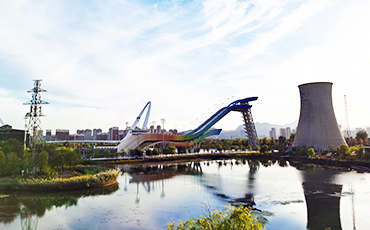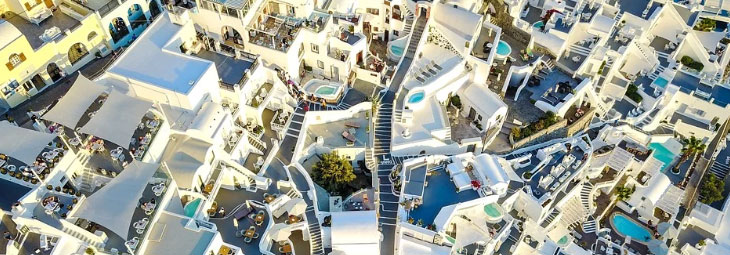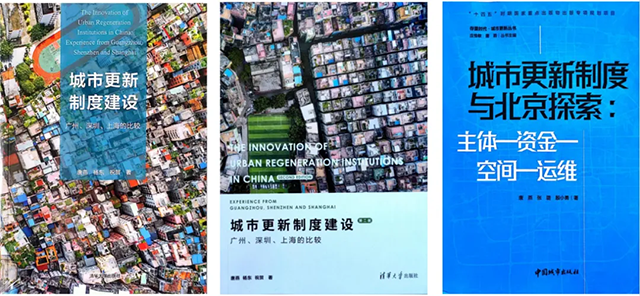


Policy support is currently one of the key factors in guaranteeing the effective implementation of urban renewal in China. In order to facilitate the smooth implementation of urban renewal, a set of standardized systems and rules need to be established for all parties to follow and use. There are two main paths for the formation of such a system or rules: the government-led “top-level design”, which defines the operational requirements in a top-down manner; and the grassroots-driven “self-creation”, which forms a series of rules of action from the bottom up, such as through community building. In the future, the latter will need to be further advocated and promoted nationwide.

1.The “Multiple Stakeholders-Capital Source-Physical Space-Operation Service” framework for analyzing urban renewal systems.
In order to grasp the key of urban renewal system construction in a concise and clear way, today I would like to share with you a 4S theoretical analytical framework, i.e., “Multiple Stakeholders-Capital Source-Physical Space-Operation Service”.
1.1Ten Perspectives on Recognizing Urban Renewal.
Which perspective can be used to recognize urban renewal and discuss its characteristics or pain points and difficulties? The answers are manifold, such as exploring whether the purpose of renewal is to preserve history and culture or to promote economic development? Is renewal oriented top-down (supply-oriented) or bottom-up (demand-oriented)? Does the target of renewal include the “three olds” (old factories, old villages, old cities) or others? Is the scale of renewal small-scale and gradual, or large-scale integrated transformation of the district? Is the mode of transformation demolition and reconstruction, partial demolition and reform, or overall preservation? Further, other aspects such as the participating subjects, land circulation, resettlement mode, property rights composition, functional changes, etc., are also important contents for in-depth excavation and reflection.
All the above mentioned aspects constitute ten key perspectives concerning the realization of urban renewal practice, and are also the key areas where the urban renewal system imposes constraints, intervenes or regulates. They are also the key areas where the urban renewal system imposes constraints, intervenes or regulates.
1.2 The key role of urban renewal system development in China at this stage.
At the present stage of China's urban renewal system construction and its operation, the focus is on the adaptation of “governance scale - power mechanism - control elements”.
The introduction of the current urban renewal policy involves different spatial scales from the central government, provinces to cities/counties, so the construction and supply of the system itself will be hierarchical, and the construction of rules on these different scales often produces three types of effects:
The first is a constraining effect, especially for some strong motivation and value-added urban renewal projects that demolish the old and build the new, to constrain the renovation process from destroying the history and culture, overdevelopment, and impacts on the infrastructure, and so on;
Second is the incentive role, for the old neighborhood renovation, historical and cultural neighborhood protection and other capital investment is often greater than the benefit of the renewal project, the government should promote and attract the participation of all parties in society through policy incentives;
Third, the balancing mechanism, this mechanism is to prompt the property owner to take the initiative to assume the responsibility of maintaining the space, so that the space can be continuously repaired, but the balancing mechanism has long been neglected in our country, for example, how to set up a continuous public maintenance contribution and implementation system that is currently relatively lacking in the process of community maintenance, and so on. In this new era of slowing economic growth and rapid social transformation, the provision of “incentive-based” systems is urgent and necessary.
1.3 The “Multiple Stakeholders-Capital Source-Physical Space-Operation Service” framework for analyzing the urban renewal system.
The approach of recognizing urban renewal from ten perspectives mentioned above is actually too complicated. Can we find a more concise framework, so that we can quickly grasp the most critical “pulse” of the operation of the project at the beginning of the urban renewal project. This “pulse” determines the success or failure of a project, and is also the area where pain points and difficulties often arise. From this demand, we try to build a set of cognitive framework for urban renewal that is mutually supportive of “Multiple Stakeholders-Capital Source-Physical Space-Operation Service”, which is referred to as the 4S theory.
To understand urban regeneration, the first thing we can focus on is the “Multiple Stakeholders”, which is about “people”, that is to say, to make clear who are related to the regeneration project, and what are the interests and decision-making relationships between them; then there is the “Capital Source” . Then there are the issues of “Physical Space” .
In addition to “Multiple Stakeholders-Capital Source-Physical Space”, we can not ignore the process of doing things, that is, how to efficiently carry out space renovation, how to maintain the vitality of the use of space through good management, etc., so the analytical framework must also add Therefore, the dimension of “Operation Service” must be added to the analytical framework.
Accordingly, the analyzing framework must add the dimension of “Operation Service”, which is centered on the principle of “Multiple Stakeholders - Capital Source - Physical Space - Operation and Maintenance Service” as the core of the 4S framework has been formed, which can help us to make a comprehensive consideration of all elements of the urban renewal process, such as ‘people, money, materials and things’.
1.4 The theoretical basis of “Multiple Stakeholders-Capital Source-Physical Space”.
In the face of the 4S theoretical framework, you may wonder what is the relationship between this and the traditional existing theories of urban renewal. For this reason, we have made a simple sorting of the classical theories related to urban renewal from different disciplines such as economics, management, society, etc., and put them into the framework structure established by 4S, and found that these theories can be corresponded to certain dimensions of the main body, funds, space, operation and maintenance, and form a specific value orientation and action guidance from the three aspects of “what”, “why” and “how”. It can form specific value orientation and action guidelines, which provide us with the basis of value judgment and action standards for urban renewal.
Taking the “Multiple Stakeholders”-related theory as an example, we can find that in terms of “what”, the stakeholder theory proposed by Freeman in the 1950s can give us a clearer understanding of the roles of residents, government, market, etc. Some roles are closely related to the renewal project, while some are weakly related. Some roles are closely related to the renewal project, while some roles are weakly related. In terms of “why”, let's take the transformation of Chongyong's living room as an analogy. If based on “pluralism”, we would advocate transforming it into a public space that can be used by all kinds of people, where children can walk around and the elderly can also move around; If we approach it from the perspective of “elitism”, perhaps the Chongyong Living Room should be more “lofty” and become a carrier for serving decision makers and highly educated people. Regarding “how to do”, the renewal action can get an action result through different ways such as public participation and gaming. It can be seen that the 4S framework can integrate a lot of valuable theoretical thinking to form a cognitive map to guide practice.
More detailed can be accessed by:https://mp.weixin.qq.com/s/KlU7O6E-SS7PiUOpYMkqZg
Edited and Translated by Tao Guan